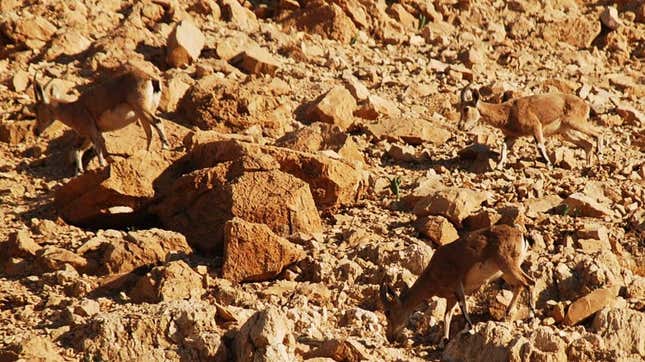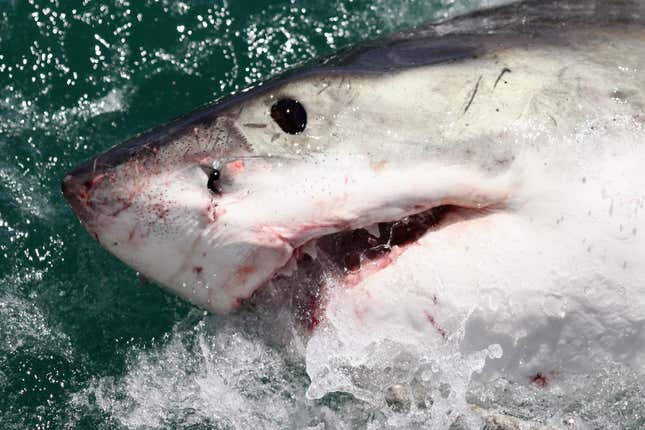
Many animals are countershaded, meaning that their dorsal sides are darker than their ventral sides. The color pattern occurs in animals terrestrial and aquatic alike and is one of the most common camouflage patterns in the animal kingdom (it was even present in dinosaurs). In the case of rock-hopping ibexes, countershading allows the tawny creatures to blend in with the rusty mountain slopes they inhabit.
Great white sharks evolved the same strategy. Viewed from above, they blend in with the dark depths of the ocean; from below, their light undersides blend in with the sunlight shining through the water’s surface.


